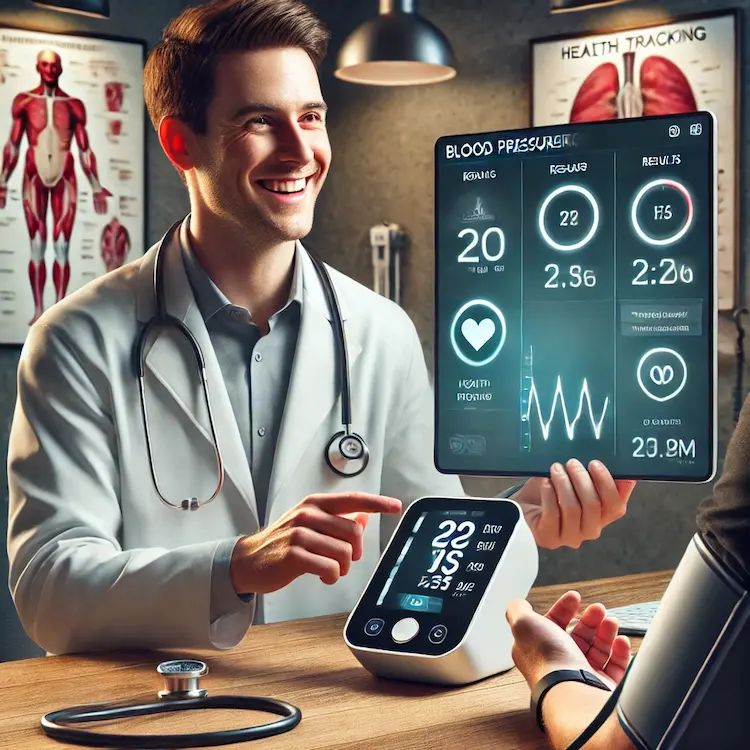Maintaining a healthy weight is crucial for overall well-being, yet many people overlook the impact of weight fluctuations on their blood pressure. Blood pressure monitors, such as those provided by Sphyg, play a vital role in tracking health metrics, offering real-time insights that can guide weight management efforts. This article explores the connection between weight and blood pressure, the role of blood pressure monitors, and how they help individuals stay on track with their health goals.
The Link Between Weight and Blood Pressure
Excess weight and obesity are among the leading risk factors for high blood pressure (hypertension). As weight increases, the heart has to work harder to pump blood, leading to higher pressure in the arteries. This relationship highlights why monitoring both weight and blood pressure is crucial for cardiovascular health.
How Weight Affects Blood Pressure
- Increased Cardiac Output – Extra body weight increases the volume of blood in circulation, raising blood pressure.
- Insulin Resistance – Obesity is often associated with insulin resistance, which contributes to hypertension.
- Hormonal Imbalances – Adipose tissue releases hormones and inflammatory markers that can impact blood pressure regulation.
- Sleep Apnea – Excess weight increases the risk of sleep apnea, a condition that can cause blood pressure spikes.
Statistics on Weight and Hypertension:
- According to the World Health Organization (WHO), over 1.28 billion adults globally have hypertension, and obesity is a major contributor.
- The CDC reports that even a 5-10% reduction in body weight can significantly lower blood pressure.
The Role of Blood Pressure Monitors in Weight Management
Blood pressure monitors provide an easy and effective way to track cardiovascular health, ensuring that lifestyle and dietary changes are having a positive impact.
Why Monitoring Blood Pressure is Essential for Weight Loss
- Detects Early Changes – A home monitor allows individuals to track trends and detect changes before symptoms appear.
- Encourages Accountability – Seeing real-time data helps users stay motivated in their weight loss journey.
- Optimizes Diet and Exercise – Users can correlate dietary and exercise habits with blood pressure readings.
- Helps Avoid Sudden Spikes – Weight loss can sometimes cause temporary blood pressure fluctuations, which a monitor can detect early.
How Sphyg Blood Pressure Monitors Enhance Tracking
Sphyg provides clinically validated, user-friendly monitors that integrate seamlessly with health apps, offering:
- Automatic Tracking – Syncs with mobile apps for long-term progress analysis.
- Irregular Heartbeat Detection – Identifies arrhythmias that may be linked to weight issues.
- Custom Alerts – Notifies users when readings exceed normal levels.
Comparing Blood Pressure Monitoring Methods
Different methods can be used to track blood pressure, each with its pros and cons.
| Method |
Advantages |
Disadvantages |
| Manual Sphygmomanometer |
High accuracy, used by professionals |
Requires training, not convenient for home use |
| Digital Arm Cuff Monitors |
Easy to use, accurate, and automated |
Can be affected by arm positioning |
| Wrist Monitors |
Portable and convenient |
May be less accurate if not positioned correctly |
| Wearable Devices |
Continuous monitoring, integrates with fitness tracking |
Expensive, can be less precise than arm cuffs |

For weight management, digital arm cuff monitors offer the best balance of accuracy and convenience.
Integrating Blood Pressure Monitoring with Weight Management Strategies
Effective weight management involves a combination of diet, exercise, and lifestyle modifications. Using a blood pressure monitor can enhance these efforts by providing measurable feedback.
Dietary Adjustments
- Low-Sodium Diet – Reducing salt intake helps lower blood pressure.
- DASH Diet – A heart-healthy diet rich in fruits, vegetables, and lean proteins.
- Hydration – Drinking adequate water supports metabolic functions.
Exercise and Activity
- Aerobic Exercise – Activities like walking, jogging, and swimming lower blood pressure.
- Strength Training – Helps in reducing body fat and improving cardiovascular health.
- Monitoring Progress – Checking blood pressure before and after exercise helps track effectiveness.
Stress Management
- Mindfulness Practices – Yoga and meditation can help lower stress-related blood pressure spikes.
- Quality Sleep – Poor sleep patterns contribute to both weight gain and hypertension.
The Future of Blood Pressure and Weight Monitoring
With advancements in health technology, blood pressure monitoring is becoming more accessible and accurate.

Trends in Blood Pressure Monitoring
- AI-Powered Monitoring – Smart devices use AI to detect patterns and predict hypertension risks.
- Integration with Wearables – Smartwatches and fitness trackers now offer continuous blood pressure tracking.
- Telemedicine – Remote monitoring allows doctors to provide real-time feedback on health data.
The Role of Sphyg in the Future
Sphyg is at the forefront of these innovations, ensuring that users have access to cutting-edge technology for optimal health tracking.
Conclusion
Blood pressure monitors, particularly those from Sphyg, are essential tools in weight management. They help users track changes, stay accountable, and make informed lifestyle choices. By integrating blood pressure monitoring with proper diet, exercise, and stress management, individuals can significantly improve their cardiovascular health.
Key Takeaways
- Weight gain increases blood pressure due to higher cardiac output and insulin resistance.
- Regular monitoring with a blood pressure monitor helps track health progress.
- Digital arm cuff monitors provide the best balance of accuracy and convenience.
- Combining monitoring with diet, exercise, and stress management improves health outcomes.
- Future advancements will make blood pressure tracking even more integrated and accessible.
Actionable Recommendations
- Invest in a high-quality digital blood pressure monitor like those from Sphyg.
- Track blood pressure daily, preferably at the same time each day.
- Pair monitoring with a heart-healthy diet and regular physical activity.
- Consult a healthcare provider for personalized advice based on readings.
- Use health tracking apps to monitor trends and adjust lifestyle habits accordingly.

